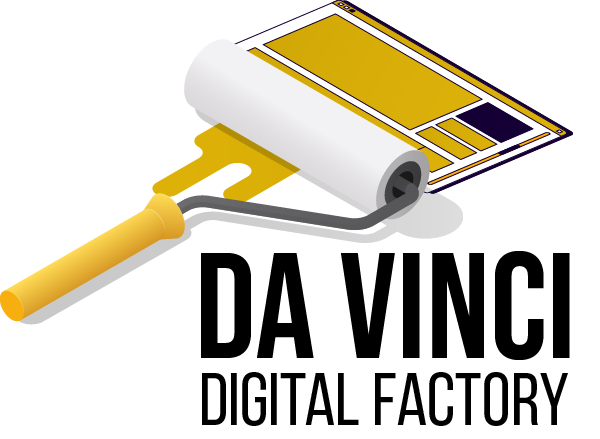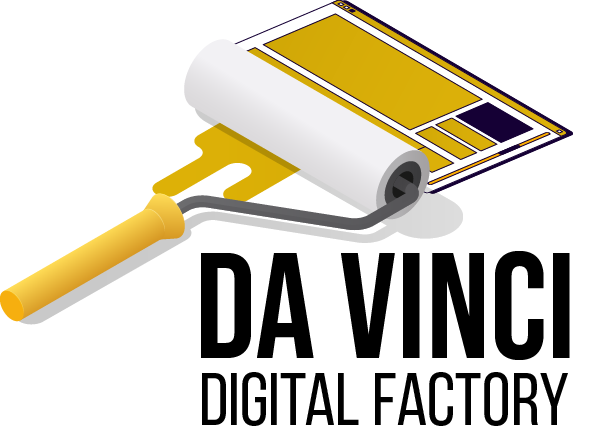Basic SEO Guide for Da Vinci: META TAGS
This is an SEO Guide to help you understand what you can use as Meta Tags on your site. Also check out what you need to know about friendly URLs and Keywords.What Is SEO?
SEO means Search Engine Optimization. It is a set of techniques to promote good positioning and increase the visibility of a website in search engines such as Google, Yahoo, and Bing.
There are some basic techniques that must be implemented on your website to appear in the top positions of search engines. Are they:
- Meta tags: title tag, meta description, and meta keywords;
- Keywords;
- Correctly applied URLs, what we call “friendly URLs”;
- Heading Tags;
- Optimized images;
- Tracking files for search engines: sitemap.xml and robots.txt.
Check out what Meta Tags are and how to use them in DaVinci. Also check out how to use URLs and what Keywords are.
Where to find SEO information on DaVinci
After logging in and entering the page you want to change, click on “Edit”.

On the next page, to find SEO information, click on “Meta Tags”.

Keywords
Search engines already have the intelligence to identify the context of user searches, which is called semantic search.
However, to analyze the best terms and get closer to the language used by users, a study of keywords is carried out based on the search volume of each one of them, which is the average of monthly searches for the terms analyzed, and the difficulty of positioning.
These keywords should be used strategically on the website's pages, meta tags, and content (you'll see more explanations about how to apply them later on).
The study of keywords is based on the terms that users search for a particular product or service in search engines. For example, "Gluten-Free Beers".
Keywords are separated into two ways:
‘Short tail’- short keywords, high search volume. Example: "Beers".
‘Long tail’ - long keywords, high conversion rate. Example: “Best Wheat Beers”.
To perform keyword research, there are some tools and extensions that provide data on search volume, placement difficulty, competition, among other information. Check out some options:
Tools/ websites: Ubersuggest, Semrush, Keyword Planner, KW Finder, Answer the Public
Plugins Google Chrome Web Store: SEO META in 1 CLICK, Keyword Surfer, Keywords Everywhere
Keyword Stuffing:
Keyword Stuffing is the name given to keyword excess, that is, an exaggerated repetition of keywords to manipulate search engines.
Current search engine algorithms are capable of detecting this technique, classified as Black Hat, that is, a punishable bad SEO practice (deletion of the page from the index). Therefore, when creating your Meta tags and content, beware of excessive keyword repetition.
Meta tags
Meta tags are elements structured on a web page. These elements appear in search results and are primarily intended to attract users to the website.
A keyword-optimized meta tag is a search signal to search engines and can help with rankings.

As you can see, Title tags and Meta descriptions work together, presenting a summary of the theme of the content contained on that page, which is why it is so important that both are optimized and attractive to generate clicks.
Title tag:
The title tag is simply the title on the SERP (Search Engine Results Page), that is, the search engine results page. It is one of the main positioning factors, so is a subject that must be optimized.
How to Create an Optimized Title Tag
- Provide a short, and objective Title tag
Use titles on your page that generate good title tags. The title (H1) that appears on the page is long and descriptive, but the title tag should be short and to the point. Because shorter titles are easy to read and crawl in the case of search engines.
Also, if the title tag or meta description is too long, search engines will cut off your title and put an ellipsis (…).
Ideally, they should be the right size so that both users and search engines can read them completely. For the title tag, the proper length is 60 characters (this is an approximate number as the snippet limit is measured in pixels).
But beware: if they are too short, they can be ignored by the search engine and replaced by random snippets of content.
To help you with that, check out these preview tools for title tag and Meta description: Moz, Higher Visibility, and Mangools.
- Title tags must contain the main keyword
For your website to have better results on Google, use the main keyword as close as possible to the beginning of the title. This helps search engines and users identify the main topic early on.
Tip: Insert your keyword in the title in a natural way. It is preferable to place the keyword near the beginning, but this is not mandatory for good SEO.
- Use your brand name
Insert your brand name after your title, with a separation (dash or slash).
Example "Wheat beers | AB-InBev".
Remember not to exceed the character limit! (approximately 60 characters).
- Consider using different titles in the H1 tag and the Title tag
You can use different keywords in the title tag and in the H1 tag (we'll talk about it later).
- Beware of Duplicate Title Tags
Make sure your site doesn't have any duplicate title tags. Google explicitly says that "it's important to have distinct and descriptive titles for each page on your site." That way, don't copy and paste your title tags. This can be considered a serious error in the audit.
At Da Vinci:


Meta description:
Although the Meta Description is not considered a ranking factor, it is very important to attract clicks, and its content must be synthesized.
To appear on Google uncut, the tag must be between 140 and 160 characters long (this is an approximate number, as the snippet limit is measured in pixels).
As explained above, the Meta Description appears along with the title tag in the SERP.
Therefore, it's important to take care of this topic, summarizing the content that will be covered on the page in question. The ideal is to use variations of the keyword used in the title tag (which comes from the page content, of course).
In this case, it's worth betting on Call To Action, that is, something that, in addition to describing its content, also encourages the user to take action.

Meta Keywords:
Meta keywords are a <meta> tag option that can be used to provide more information to search engines about the content on a page.
Therefore, in this space, you must provide the main keywords of your page.
There is no official maximum number of keywords that can be placed in the meta keyword tag, but it is recommended that it be between 200 and 250 characters long. Having too many keywords indicates a lack of focus on the page.
If you still have a lot of words, consider breaking it down into two more specific pages on the subject, for example.

Open Graph
In this section, you will enter the Meta tags used to optimize the page sharing card on social media.
Open Graph is an internet protocol, the first platform to use this feature was Facebook, with the objective to standardize the use of metadata on a webpage and deliver a better experience to the user.
It is through this set of metadata that social networks look on your page to highlight when a person likes your page or puts your URL in the feed, for example. That is why it is so important that this space is optimized.
See how to enter this information into Da Vinci:

URLs
One very important topic is URL, the URLs are optimized and friendly to users and search engines, as this will help identify what content they will find on a page when they access the link.
The URL must contain keywords that specify the type of information that will be found in it.
A bad URL, for example, would be: https://www.ab-inbev.com/qukcmRad46ams
So the example of an ideal URL would be: https://www.ab-inbev.com/our-brands
As long as the URL message does not lose comprehension by the user, articles and linking verbs are not necessary when constructing a URL. Therefore, a friendly URL can be shortened. For example:
The URL “what-the-best-kinds-of-beer-to-harmonize-with-fish” can be summarized as “best-beers-to-harmonize-with-fish”.
Attention: URLs must not, under any circumstances, contain capital letters, spaces, and special characters, this is relevant because we must facilitate the reading of search engines and avoid errors. Therefore, use the words in lowercase, separated by hyphens. Numbers can also be used.
The Number of characters: A URL should be as short as possible, as this way the ranking tends to be better than for longer ones. However, it is also important that it make sense. Anything between 50 and 80 characters can be used as a base.
Remember to use the main content keyword in your URL. This will also help your page's organic placement. One tip is to build your URL based on the page title.
Generally, in Da Vinci, URLs are automatically generated from the main title of the page, but if you need to change or remove the automatic URL option, go to the “URL alias” field.



